No products in the cart.
For adding seasonal interest to your garden, the Abelia is sure to do just that. The semi-evergreen shrub has foliage that changes color with the season and blooms flowers in late spring to fall.
These flowering shrubs look beautiful in mass plantings with fragrant white flowers. Furthermore, the plant is deer resistant and attracts pollinators to the garden. So, today we look closely at caring for the Grandiflora Rose Creek.
Plant Name: Abelia Rose Creek
Other Name: Rose Creek Abelia
Plant Type: Evergreen Summer Flowering Shrub
Native Areas: Asia
Light Requirement: Full Sun to Partial Shade
Watering: Average
Fertilizer: Slow Release Fertilizer
Toxicity: Non-toxic
Temperature: Frost and drought tolerant
Propagation: Stem Cuttings
Growth: 2 to 3 feet high
Soil Type: Loamy Moist Well Drained Soil
USDA Zones: 4-11
More About Rose Creek Abelia
The Abelia genus comprises 30 species of both deciduous and evergreen shrubs. These are long-flowering outdoor plants. The Rose Creek has a dense yet compact habit with red stems and glossy green button leaves.
The foliage emerges with a pink hue and turns dark green in summer. In the USDA growing zones 7-9, you can grow them as an evergreen shrub, with the leaves turning a soft purple-green in winter.
In zone 6, you can grow them as a semi-evergreen Abelia or deciduous, depending on the winter temperatures. The plant blooms tubular white flowers with rosy petals on long shoots until early summer.
Rose Creek Abelia Care Guide
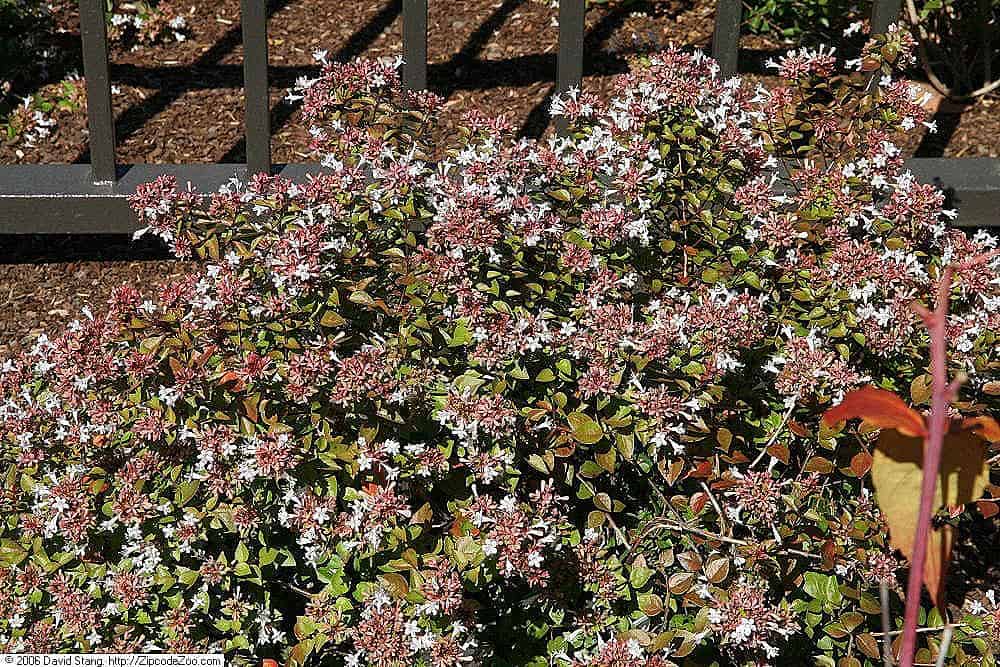
The Rose Creek Abelia is a versatile plant that is frost and drought-tolerant. The plant belongs to the honeysuckle family and looks great in containers for mass planting and small groupings. Always ensure to plant your Rose Creek Abelia six feet apart to allow them to reach a mature growth.
For a great look, add some Soft Touch Holly with a Bowood shrub into the mix.
The Right Soil For Rose Creek Abelia
The Abelia plant thrives in a well-draining potting mix with moist soil. But the container plants can tolerate different soil conditions. You can amend the soil before planting with some organic compost. The soil’s pH level must be slightly acidic for the best growth.
Lighting Needs For Rose Creek Abelia
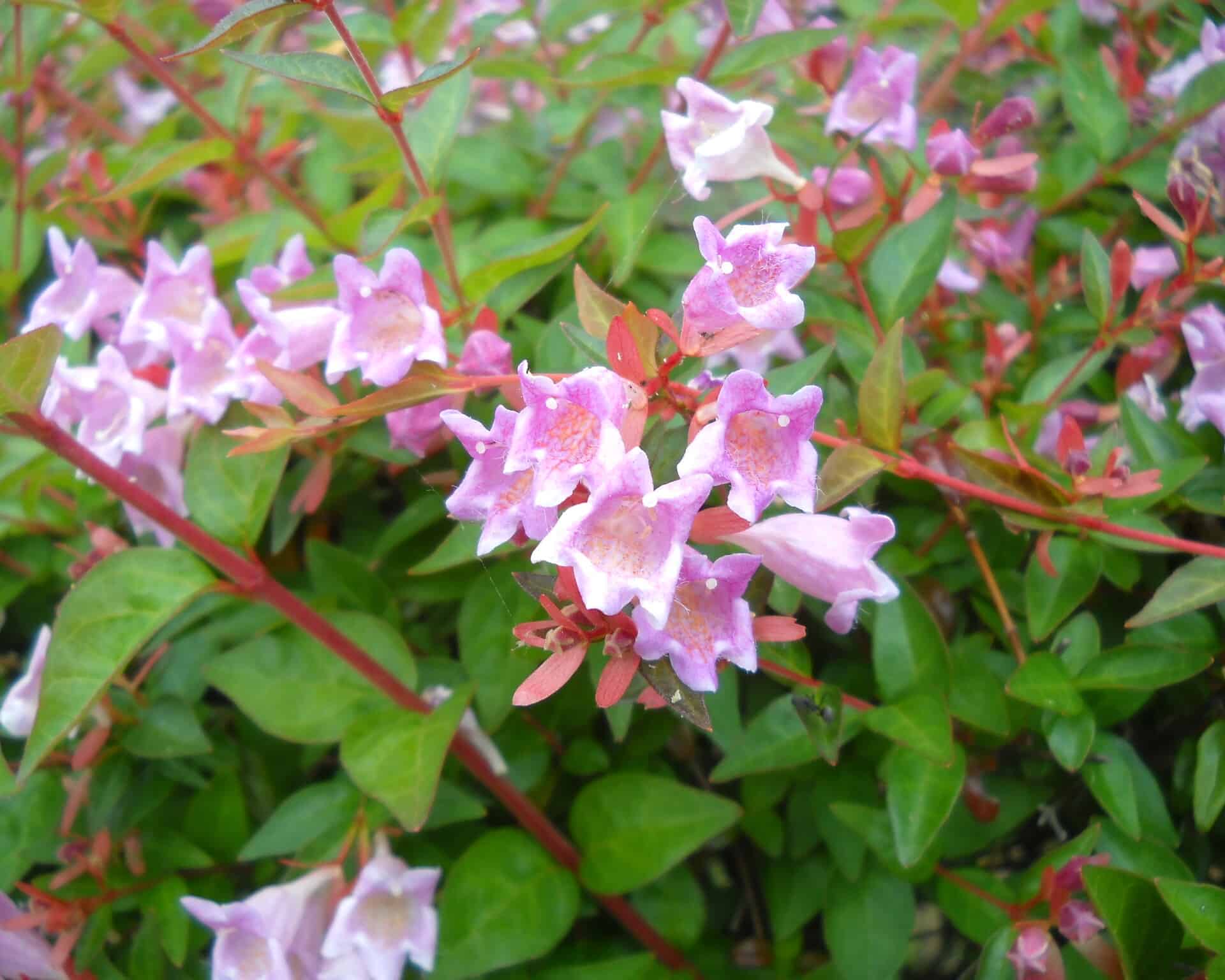
You can grow your Rose Creek in full sun to partial shade. Still, in direct sunlight, you will get more flowering. Yet, we recommend providing your plants with afternoon shade in warmer climates.
Watering Rose Creek Abelia
Once established, your plant can handle drought but do best with regular watering. During warm summer, you can expect to water Abelia x ‘Rose Creek’ a bit more to keep them healthy and vibrant. Still, allow the soil to dry between watering and water deeply but infrequently.
Temperature and Humidity
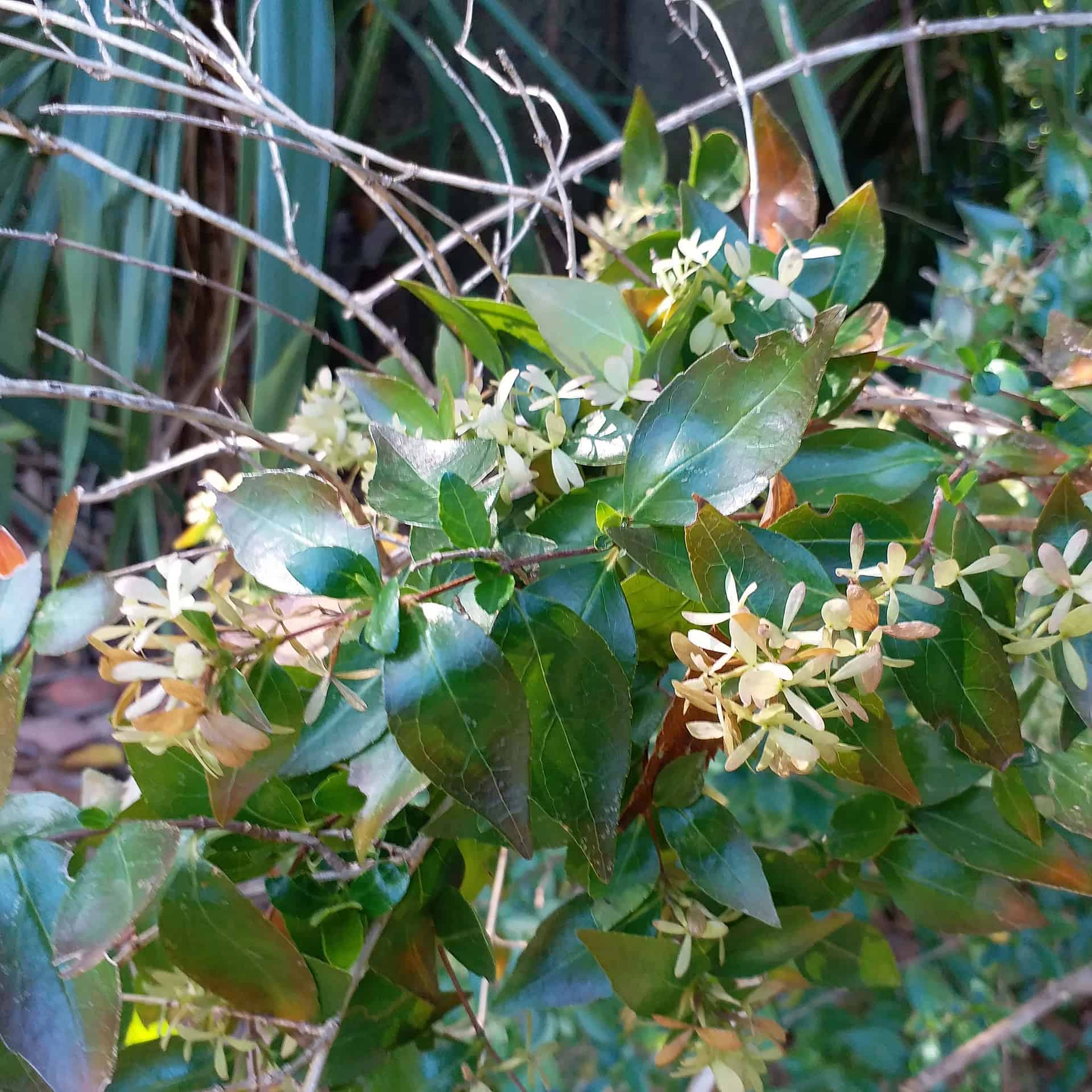
The Abelia plants can grow in different climates. You need not provide extra care when you grow your plant in the right growing zone. Still, if grown in containers, it helps to provide them with added protection and move them to a protected area.
Fertilizing in Early Spring
When the soil has organic matter, you can add some compost yearly to provide nutrients and ensure proper drainage. Alternatively, you can use a slow-release feed to boost new growth.
Pruning The Shrub’s Canes
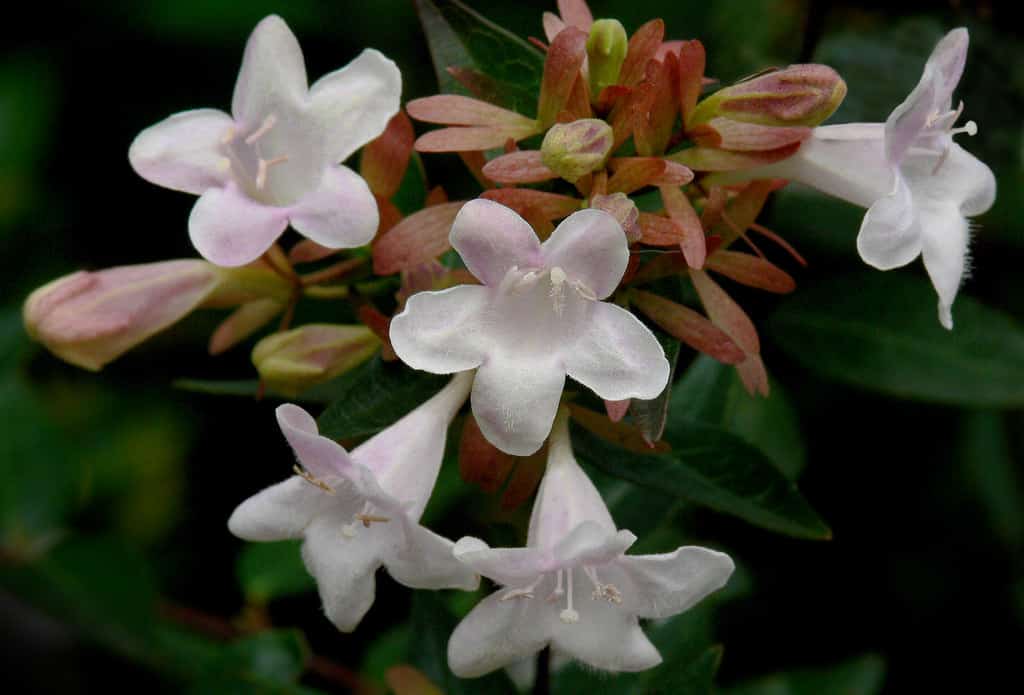 white flowering abelia grandiflora @flickr
white flowering abelia grandiflora @flickr
With pruning shears, you can keep your flowering shrub looking great to grow strong. The best time to use your pruning tool is late winter or early spring. Doing this helps prevent pruning off the new growth.
You can begin trimming off the dead to damaged branches. Furthermore, you can trim several canes to provide a desired shape. Still, do not remove more than one-third of your shrub. You can also remove the long shoots from the trunk.
Also, depending on your plant, it can flower on old wood and is best pruned after flowering.
Propagation of Rose Creek Abelia
The best method to propagate your Rose Creek si with softwood or hardwood cuttings. We recommend taking softwood cuttings as the growth chance is a great success.
Take your sterilized snips to cut a small cane six inches long below a node.
Remove the lower leaves and dip the cut end into a rooting hormone.
Prepare a container with well-drained soil and plant the cut end into it.
Moisten the soil and place your pot in a sunny area while checking that the soil is moist daily.
You should notice roots forming in a month or two. Another method is planting the seed, but it is essential that the collected seeds might produce a different plant from the parent plant.
You can fill a small container with moist soil that drains well and plant a few seeds by pressing them gently onto the soil. Leave the pots in a warm location and keep the soil moist. Germination can take up to a few weeks until you see the seedlings emerge.
You can then leave them to grow a few inches taller and harden them off to transplant outdoors.
Rose Creek Abelia Varieties
When you look at the Rose Creek Abelia, you can find several similar varieties to grow in the garden.
Glossy abelia (Abelia × grandiflora)
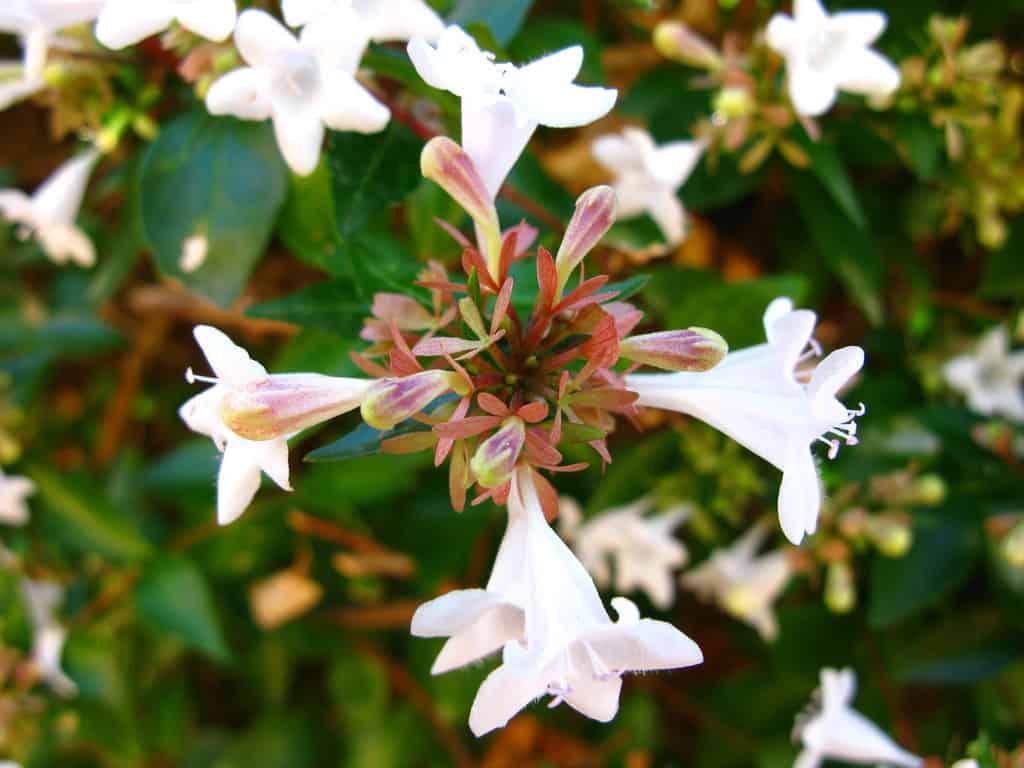 abelia grandiflora @flickr
abelia grandiflora @flickr
The Glossy Abelia is a show-stopper with its white buds and green leaves.
‘Kaleidoscope’ abelia (Abelia x grandiflora ‘kaleidoscope’)
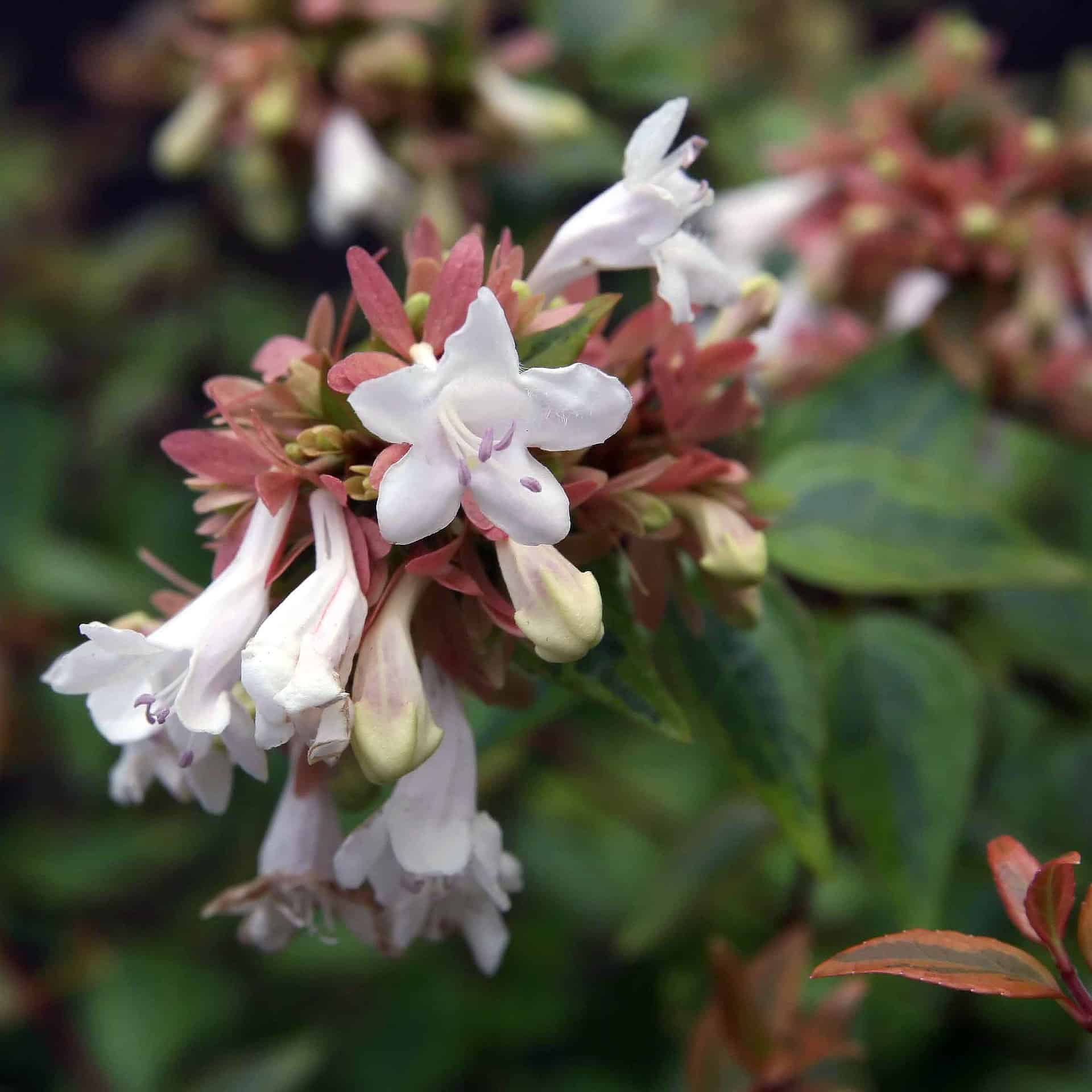
While the white buds are show stoppers on this Abelia, what does stand out is the confetti-like leaves changing from gold, orange, to red in the fall.
‘Edward Goucher’ abelia (Abelia x ‘Edward Goucher’)
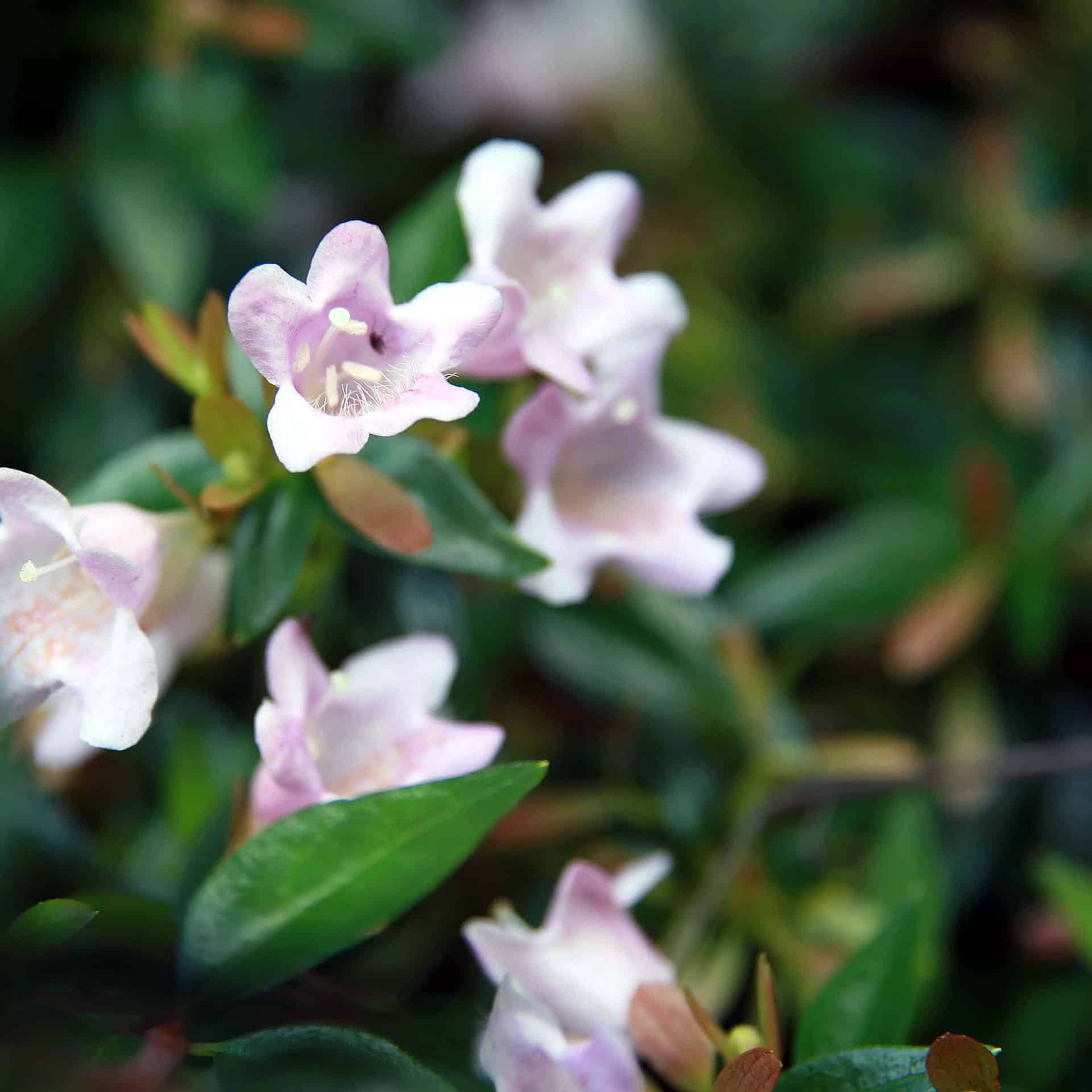
The shrub blossoms white-purplish flowers and has variegated foliage that is edged with a bronze hue.
Rose Creek Abelia Common Diseases and Pests
Regarding ease of care, the Rose Creek Abelia is a winner, primarily problem-free. But as you know, problems can still arise. One issue that can happen is that while it can grow dark green leaves, it grows thick but has no fragrant flowers.
Here it all comes down to the fertilizer, and growth begins with fewer white flowers with too much nitrogen. Hence, using a feed with a higher phosphorus ratio is best than nitrogen and potassium.
Rose Creek can also develop yellowing leaves, a sign of too much water as the soil does not drain well. It can turn into root rot and knowing it helps to dig up your plant. You can remove the infected roots to branches and amend the soil with sand and compost.
Lastly, there are no serious pests except for the normal aphids, mealybugs, spider mites, and thrips that can munch on the glossy green leaves. To help control these infestations, it helps to use an insecticidal soap or neem oil.
Frequently Asked Questions
Abelias can last 5 to 50 years, depending on the growing climate.
In some parts of Mexico, the flower is symbolic of equality.
One of the most fragrant white flowers you can find is on the Abelia mosanensis, a cold hardy plant. The flowers have a citrus blossom aroma.
Provide your Abelia with a space six feet apart to grow into a mature height and spread.
The Rose Creek Abelia is not a rare plant and is found at most local garden centers. Plantly also has a collection of this genus for you to look at here.
Whether you want to buy, sell, or simply reach out to other plant enthusiasts, Plantly is the right place to be!


